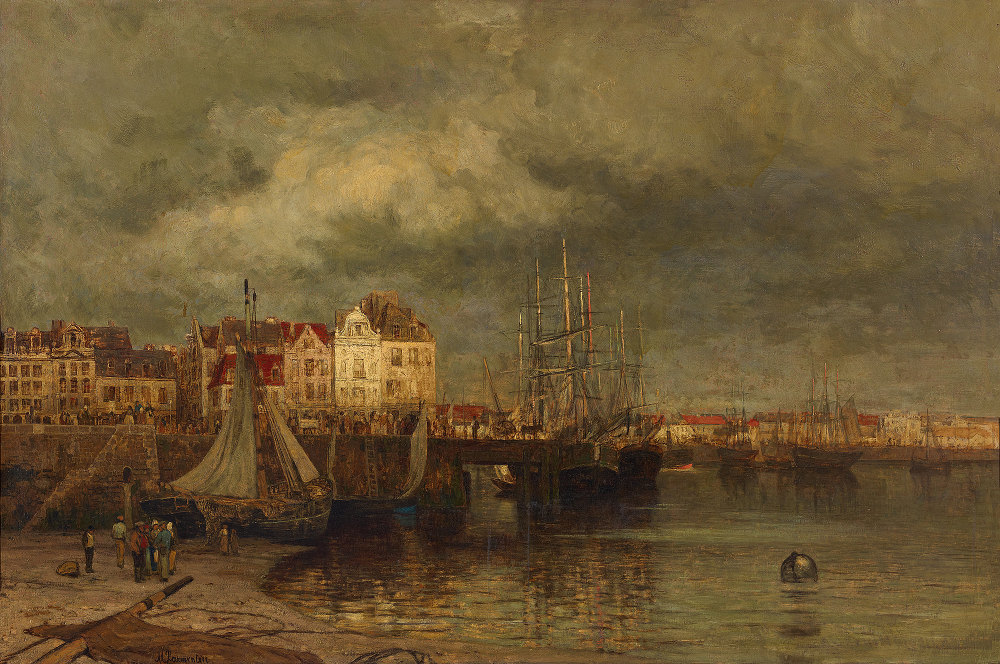 Maria von Parmentier, Der Hafen von Dieppe, vor 1878, © Staatliche Museen zu Berlin,Nationalgalerie/Andres Kilger. Catch Fighting for Visibility at the Alte Nationalgalerie, Mitte, through Mar 8.
Maria von Parmentier, Der Hafen von Dieppe, vor 1878, © Staatliche Museen zu Berlin,Nationalgalerie/Andres Kilger. Catch Fighting for Visibility at the Alte Nationalgalerie, Mitte, through Mar 8.
A mere century after women were first admitted to Berlin’s art academy, the Alte Nationalgalerie is showing some 60 works by 33 female artists produced in the 140 years leading up to 1919. The fact that curators haven’t looked further afield than the museum’s own archive may explain why some of the big names such as Modernist frontrunner Paula Modersohn-Becker, abstract painter Gabriele Münter or the Berlin Secessionist Sella Hasse are represented by what arguably isn’t their most impressive work. The show’s eight chapters spotlight how, after a more liberal late 18th and early 19th century, women were discriminated out of an increasingly competitive art business and had to organise their own training, seek freedom in Paris, form their own networks and make a living through commission work and patronage. Highlights include Sabine Lepsius’ confident self portrait (1885), Käthe Kollwitz’ characteristic “Lovers II” (1913) and Alma Erdmann’s arresting “Woman from the Black Forest” (1861). Ultimately, the wall text acknowledges the museum’s previously limiting exhibition politics and points to a more woke future.
Subscribe to our weekly Newsletter

NEWSLETTER
Leave this field empty if you’re human:
Fighting for Visibility: Women Artists in the Nationalgalerie before 1919 | Alte Nationalgalerie, Mitte. Through Mar 8.